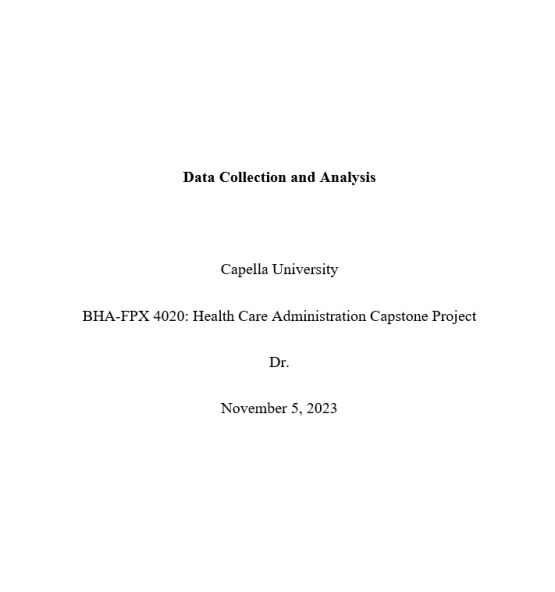
Data Collection and Analysis
Capella University
BHA-FPX 4020: Health Care Administration Capstone Project
Dr.
November 5, 2023
Availability:In Stock
Quantitative and Qualitative Analysis of Data
The findings show that criminal attacks are the most common breaches. Cybercrime is on the rise in the health care sector. The increasing threats aligns with the growth of criminal networks seeking to gain from stealing and manipulating patient and organizational data. Ransomware attacks involving malicious software interfere with a hospital’s system until attackers provide a decryption key after receiving payment of a ransom. Lost devices and information systems, intentional and unintentional staff actions, and malicious insider activities are also common in the organization. The organization should strive to understand complexities of breaches and evidence-based strategies for decreasing the number of data breaches. The cost of breaches is also rising due to complexity of attacks and increased vulnerability of organizational system. Hospitals are vulnerable to data theft, encryption, and ransom demand caused by specialist criminals.
Vulnerability to networks of different cybercrime groups causes massive losses in terms of ransom payment and lawsuits. Additionally, reputational damage explains high cost of breaches since a facility risks losing clients aware of high number of reported breaches. The various forms of breaches and cost implications reinforce the need for significant investment in security. The objective is to adopt advanced network security tools and allocate an adequate budget for the IT team. The investments enhances the testing of proactive administrative, physical, and technical safeguards to avoid privacy breaches from within and outside. In the end, the EHRs and connected medical devices will be secure and reliable across the care continuum.
Evidence-Based Recommendations
Complexities of data breaches reveal the need for a robust plan for identifying, intercepting, and preventing incidents. One viable solution is proactive staff training and education (Abouelmehdi et al., 2018). The goal is to make everyone aware of cybersecurity measures and policies used in the organization. The training involves familiarity with HIPAA’s provisions on data security, privacy, and confidentiality. Such awareness help prevent unintentional and intentional breaches due to understanding of the consequences of a data breach on the workforce, organization, and patients. The training also makes staff aware of measures for preventing intrusions and dealing with one when it occurs.
A second recommendation is limiting access to health and patient records. The process entails identifying users, tracking their activities, and ensuring safe procedures for logging in an off. Effective access controls and permissions also ensure that only allowed staff access sensitive health records across the continuum. Thirdly, the high cost of breaches and staff contribution to data theft and manipulation call for limited use of personal devices. Employees are likely to use personal devices such as smartphones and laptops for quick remote access, which creates additional risks (Al-Muhtadi et al., 2019). The limited monitoring of staff actions increases the risk of malware attacks. Thus, it is necessary to have a strict and clear policy that outlines procedures and standards for using personal devices within and outside the hospital’s network.
Fourthly, outdated IT infrastructure is among the primary causes of high rate of criminal attacks. The older the equipment, the more chances that criminal networks will access the network. Therefore, it is appropriate to update devices and the network regularly to reduce the risk of medical data breaches (Argaw et al., 2020). The process also entails updating software regularly since hackers constantly check for new ways to exploit the systems and access sensitive data. Regular software updates eliminate bugs and lower the risk of cyberattacks (Seh et al., 2020). The recommendation also requires the organization to recruit qualified personnel with knowledge and skills in healthcare software development and security. The move enhances resistance to current and future cybersecurity threats. Updating software also strengthens the quality of data encryption. Encryption saves the organization from penalties arising from violating HIPAA rules.
Reviews
There are no reviews yet.